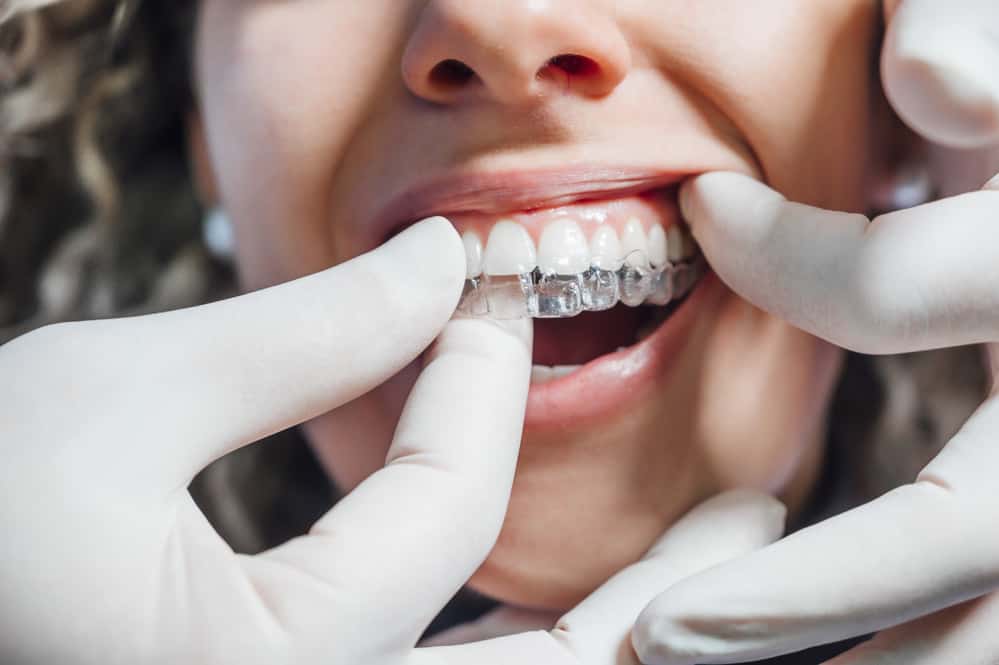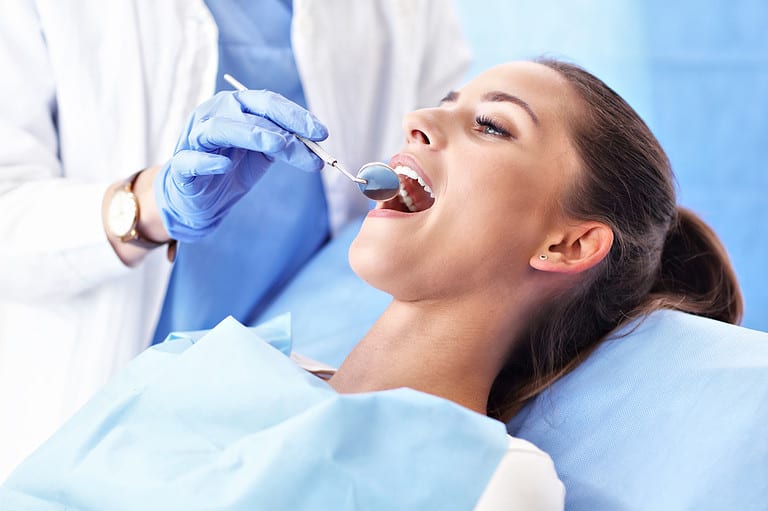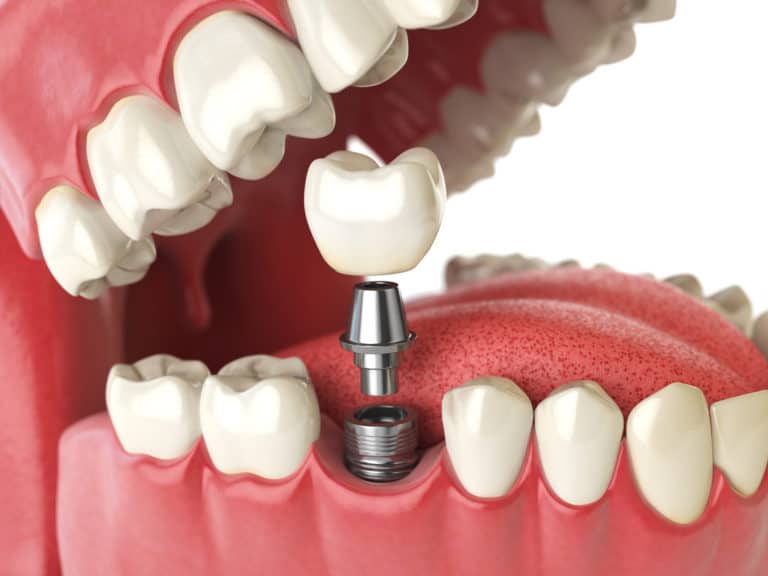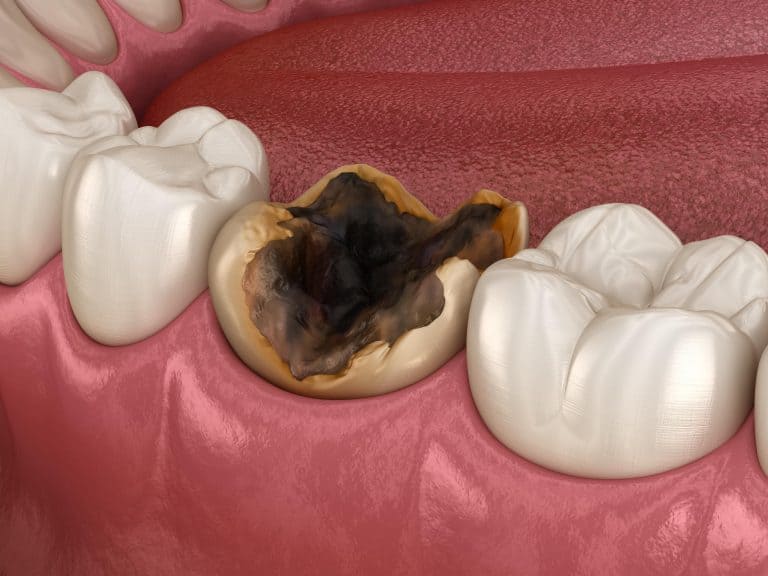Clear aligners are a popular and modern choice for orthodontic treatment. Invisalign is the most well-known and widely used brand of clear aligners, and many people choose them for their convenience, comfort, and aesthetics. However, it is important to clean them properly for them to last.
This article will provide clear steps for how to clean Invisalign aligners properly. It will discuss the importance of cleaning the aligners, how to prepare for cleaning them, and the best methods for cleaning them. It will also provide information on what to avoid when cleaning the aligners.
By following these steps, users can ensure that their Invisalign aligners stay clean and last as long as possible.
Why Clean Your Invisalign?
Cleaning Invisalign aligners regularly is essential to maintain the appliance’s effectiveness and prevent the spread of bacteria, ensuring optimal oral hygiene. After every meal or snack, the aligners should be removed and rinsed in lukewarm water. A soft-bristled toothbrush and a solution of warm water can be used to clean the aligners. After cleaning, the aligners must be rinsed thoroughly in lukewarm water again. It is important to remove all food particles from the aligners before reinserting them.
For a deeper clean, antibacterial soap can be used with lukewarm water. It is also important to remember to brush your teeth before reinserting the aligners, as this will help prevent plaque buildup.
Invisalign aligners should be cleaned at least once daily to prevent bad breath and the spread of bacteria. Cleaning the aligners regularly will also help ensure that the appliance works correctly and that the teeth are shifting into the correct position.
It is important to remember that the aligners should never be cleaned with hot water, as this can damage the aligners and cause them to lose their shape. Additionally, aligners should not be cleaned with toothpaste, as the abrasive ingredients can damage the aligners.
Regular cleaning and maintenance of Invisalign aligners are essential to ensure that the appliance works properly and that the teeth shift into the correct position. This will also help to prevent the spread of bacteria and maintain optimal oral hygiene. Proper cleaning techniques, such as using lukewarm water and a soft-bristled toothbrush, should be followed to ensure the aligners are clean and sanitary. Additionally, it is important to remember to brush your teeth before reinserting the aligners, as this will help to prevent plaque buildup.
Preparing to Clean Your Aligners
Before the cleaning process can begin, it is important to take the necessary steps to prepare the aligners. The first step is to choose an appropriate cleaning method.
Various cleaning methods are available, ranging from denture cleaners to cleaning solutions to regular cleaning with water. Hydrogen peroxide and effervescent tablets can also be used as a basic cleaning.
For a nightly cleaning routine, aligner trays should be soaked in a cleaning solution and rinsed with warm water before being placed back in the mouth. It is important to remember never to use hot water when cleaning aligners, as it can cause them to deform or become misshapen.
Additionally, harsh chemicals, such as bleach, should not be used as they can cause discolouration or damage to the aligners. Finally, aligners should be inspected regularly for any signs of damage or tear, as this can increase the risk of infection.
Cleaning aligners regularly is an important part of maintaining oral hygiene and keeping aligners in good condition. Taking the necessary steps to prepare aligners before cleaning will help ensure the process is done correctly and safely.
Using a Soft-Bristled Toothbrush
A soft-bristled toothbrush is an effective way to brush away plaque and debris from the aligners gently. Using a baby toothbrush with soft bristles is recommended to clean the aligners without causing any damage.
Additionally, brushing the aligners every time after they are taken out of the mouth is important to prevent plaque buildup. A combined solution of hydrogen peroxide and water can also clean the aligners. This solution can be used to disinfect the aligners and kill any bacteria that may be present. Alternatively, one can also use denture cleansers for cleaning the aligners.
However, avoiding harsh chemicals or abrasive materials while cleaning is important, as they can damage the aligners. It is also recommended to avoid using hot water to clean the aligners as it can cause them to warp and distort their shape.
It is also important to take extra care while cleaning around the edges, as plaque and debris accumulate in those areas. It is also recommended to rinse the aligners with cold water after brushing to remove any leftover residue.
Finally, it is important to dry the aligners with a soft cloth or tissue to prevent the build-up of bacteria. Following the above-mentioned steps ensures that their aligners are clean and free of any bacteria or debris.
It is advised to clean the aligners regularly to ensure that they remain in good condition and provide optimal results during the aligner treatment.
Soaking with Dental Cleaning Tablets
Soaking aligners in a solution of dental cleaning tablets can be likened to a deep-cleaning bath, thoroughly removing plaque and bacteria from the surface. This cleaning tub also helps to break down any built-up bacteria and debris that may have accumulated on the aligners.
To create a cleaning solution for the aligners, you can use liquid soap, hydrogen peroxide, vinegar, baking soda, toothpaste, and denture tablets. Electric or soft-bristled toothbrushes can manually scrub aligners to remove any remaining bacteria.
For optimal cleaning, the aligners should be soaked in the cleaning solution for a minimum of 15 minutes once a day. However, a longer soak time of up to 30 minutes may be necessary to remove stubborn plaque and bacteria.
Cleaning tablets are specially designed to clean and disinfect dentures and aligners effectively. One of the benefits of using cleaning tablets is that they are easy to use and require less time than other cleaning methods. They are also safe for use with metal and plastic aligners.
The tablets should be dissolved in a cup of warm water, and the aligners should be soaked in the solution for 15-30 minutes. After the soak, the aligners should be rinsed thoroughly with lukewarm water.
Cleaning tablets are an effective way to ensure that aligners remain clean and bacteria-free. The tablets can be used daily to help keep aligners clean and bacteria-free. Additionally, they are an easy and convenient way to ensure that aligners stay in optimal condition.
Using a Cleaning Solution
Creating a cleaning solution for dental aligners can effectively disinfect and remove bacteria from the surface. There are multiple methods of creating a cleaning solution, including using hydrogen peroxide and vinegar mixture, baking soda, and toothpaste. Alternatively, denture cleaners and specially designed cleansers can be used.
Additionally, it is important to use warm water and a soft-bristled toothbrush. These items should be used with plastic trays for a thorough cleanse of the aligners. The cleaning solution should be used to scrub the aligners gently. It is important not to scrub too vigorously, which could damage the aligner material. It is also important to avoid using harsh chemicals that could damage the plastic.
Additionally, the solution should be mixed according to the instructions on the cleanser to avoid any serious damage. Once the aligners have been scrubbed, the cleaning solution should be rinsed with plain water. This will ensure that no residue is left on the aligners.
After this, the aligners should be put in the plastic trays and left to dry. This helps to ensure that the aligners are completely clean and free of any bacteria.
Avoiding Hot Water and Harsh Chemicals
When cleaning dental aligners, it is important to avoid using hot water and harsh chemicals as these can damage the plastic material. Instead, it is recommended to use cleaning crystals, specifically designed for cleaning dental aligners, such as plastic and invisible aligners.
Cleaning crystals are usually made of sodium bicarbonate and citric acid, which are not as harsh as hydrogen peroxide, vinegar, baking soda, and other ingredients found in toothpaste or denture cleaners. Moreover, when cleaning dental aligners, it is best to use lukewarm water and a soft toothbrush to ensure the material is not damaged.
Furthermore, a soft toothbrush can help remove debris and plaque buildup from the aligners. Additionally, it is important to avoid submerging the aligners in water for a long period, as this can cause them to warp and become distorted. Therefore, it is essential to use the appropriate cleaning materials and techniques when cleaning dental aligners so that they remain in good condition.
Cleaning Your Aligners After Every Wear
After each use, it is important to ensure that dental aligners are properly cared for and sanitised to maintain their structural integrity and effectiveness. It is recommended that the aligners be cleaned with cleaning agents and fresh water, as unseen bacteria can adhere to the aligners when worn.
To properly clean the aligners, one should use a:
- Separate the toothbrush with a small amount of mild soap in warm water
- Active ingredient hydrogen peroxide-based cleaning products such as branded cleaning products or cleaning crystals
It is important to avoid harsh methods of cleaning and detergents as these can damage the plastic aligner trays. Invisalign recommends using a soft-bristled brush and cool water to remove any accumulated debris on the aligners.
Additionally, it is important to rinse the aligners with fresh water to remove any remaining cleaning agents. These steps ensure that your aligners are properly cleaned for each use and last longer.
Key Takeaways
Regularly cleaning your Invisalign aligners is vital to ensure they remain clear, hygienic, and effective. Taking the time to clean your aligners properly will help them last longer and perform better. As a result, you will enjoy the benefits of a straighter smile faster and with less hassle.
Practising proper hygiene will also prevent bacteria and plaque build-up, helping to keep your teeth and gums healthy. With clear steps and consistent effort, you can easily maintain your Invisalign aligners and keep your smile looking its best.
If you have any questions or would like to learn more about how to care for your Invisalign aligners properly, don’t hesitate to contact Ashfield Family Dental, located in Ashfield, NSW. Our dentists in Ashfield will happily provide the advice and guidance you need to ensure your aligners stay clean and effective. Don’t wait longer to start your journey to a straighter, healthier smile. Contact Ashfield Family Dental today!




